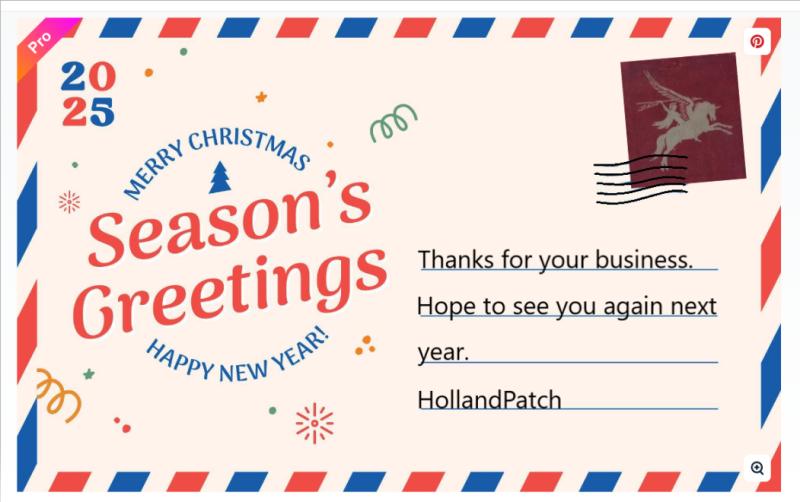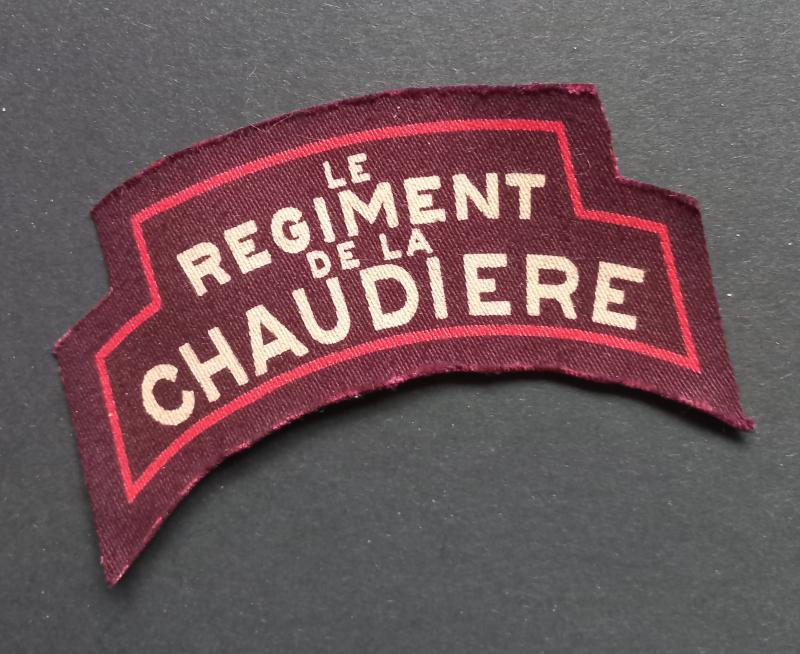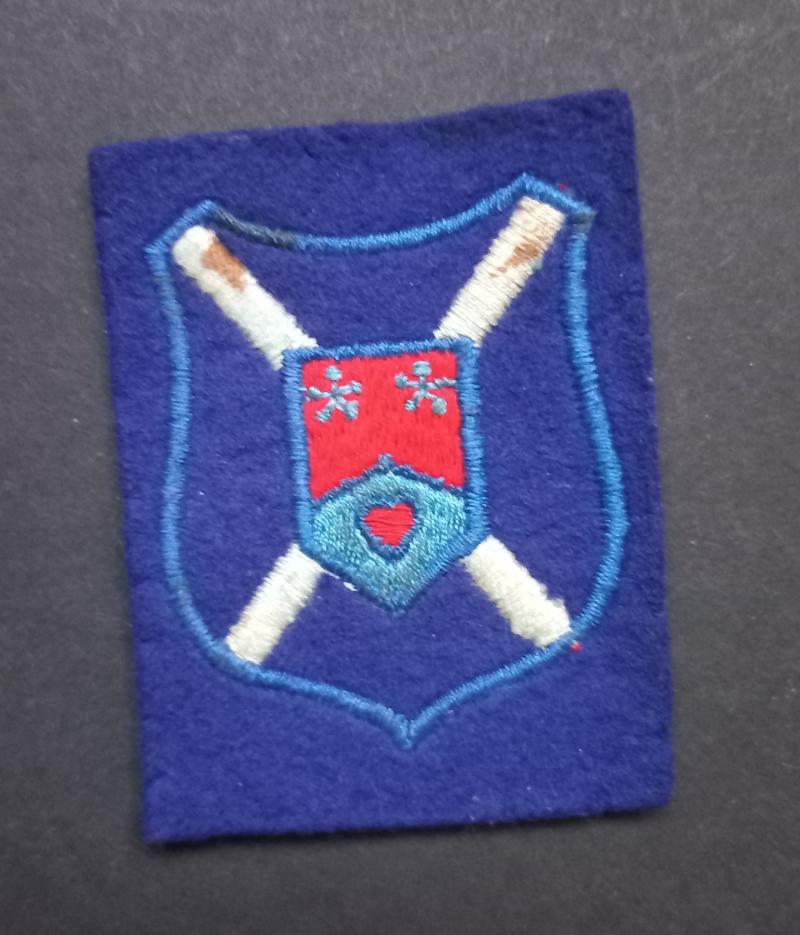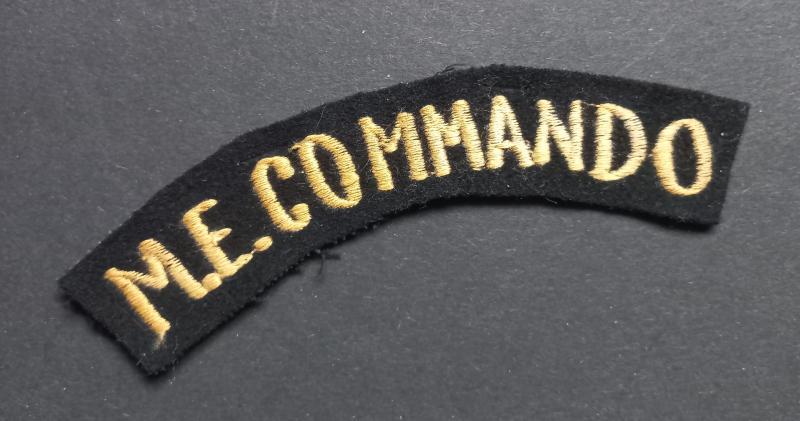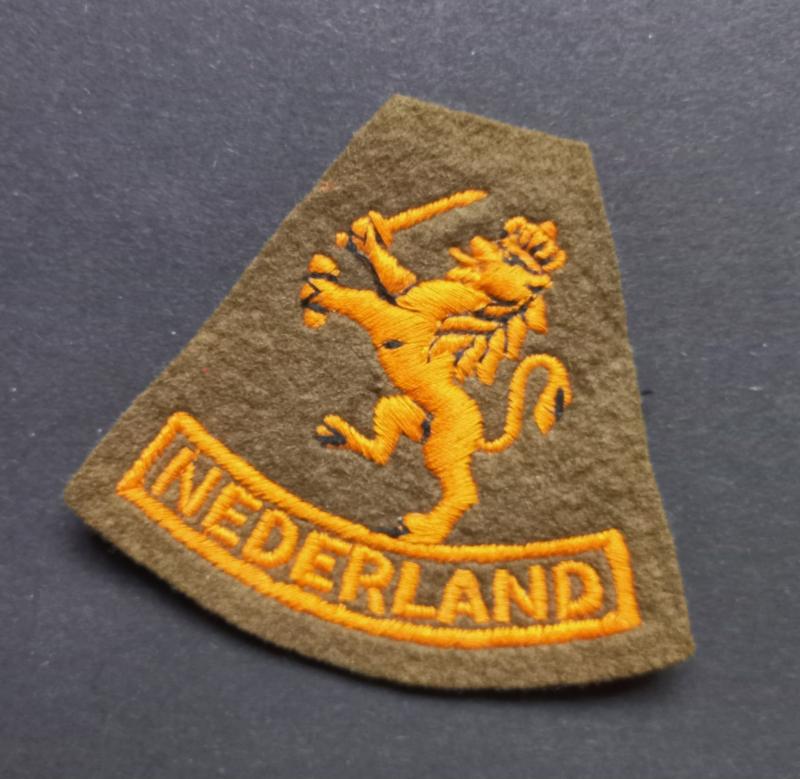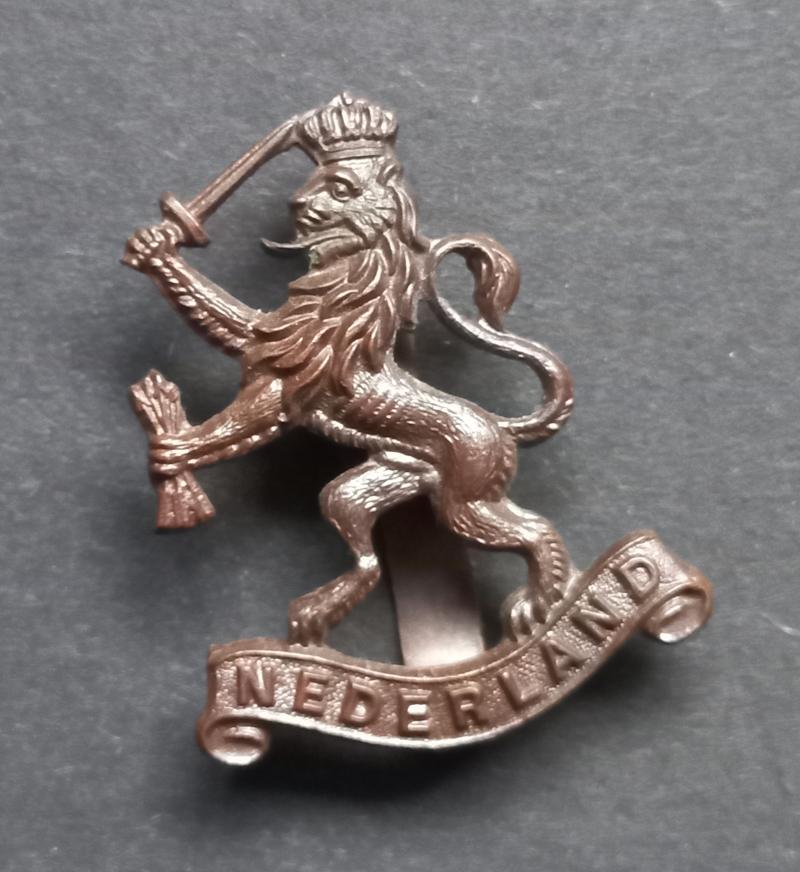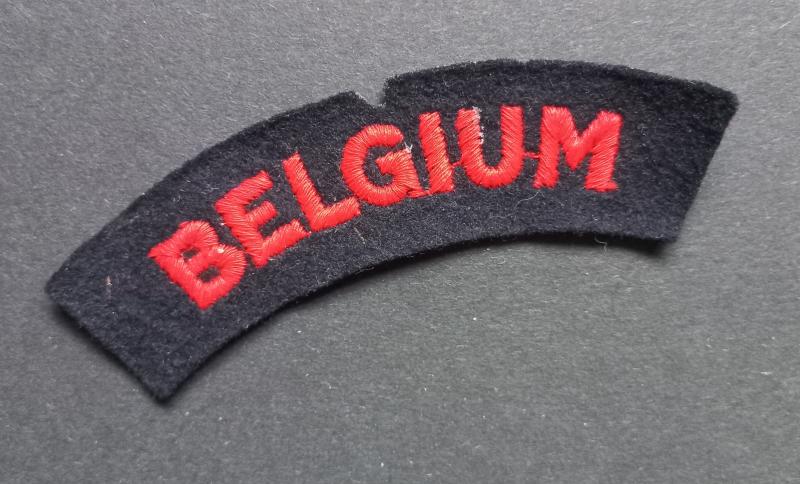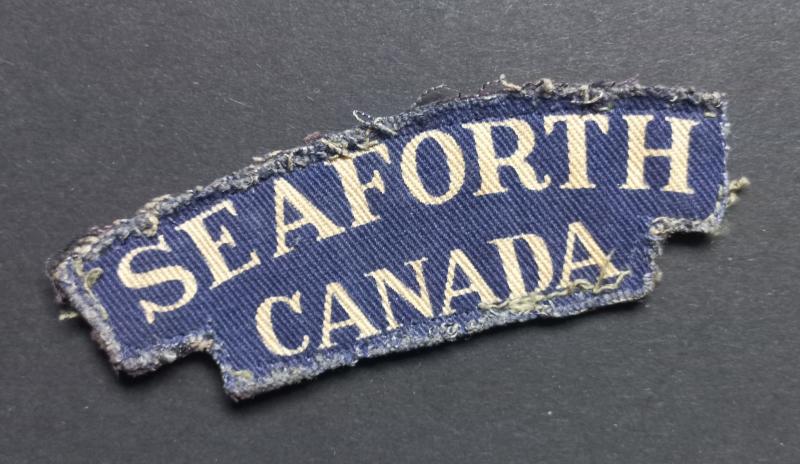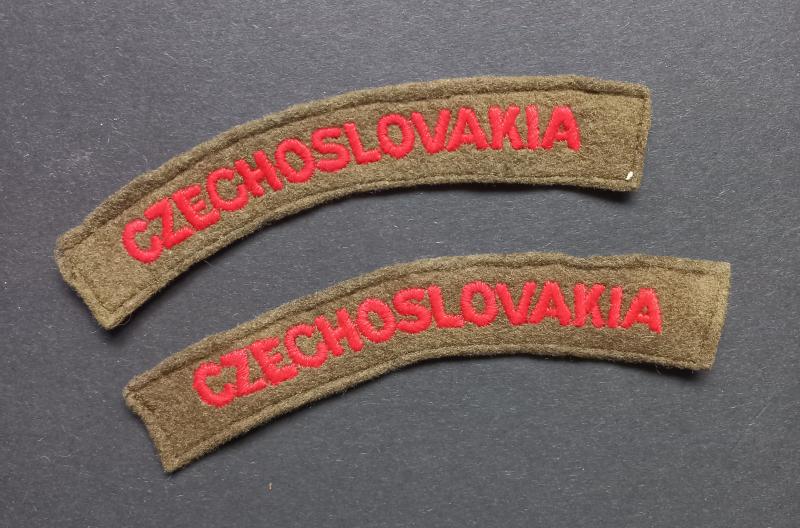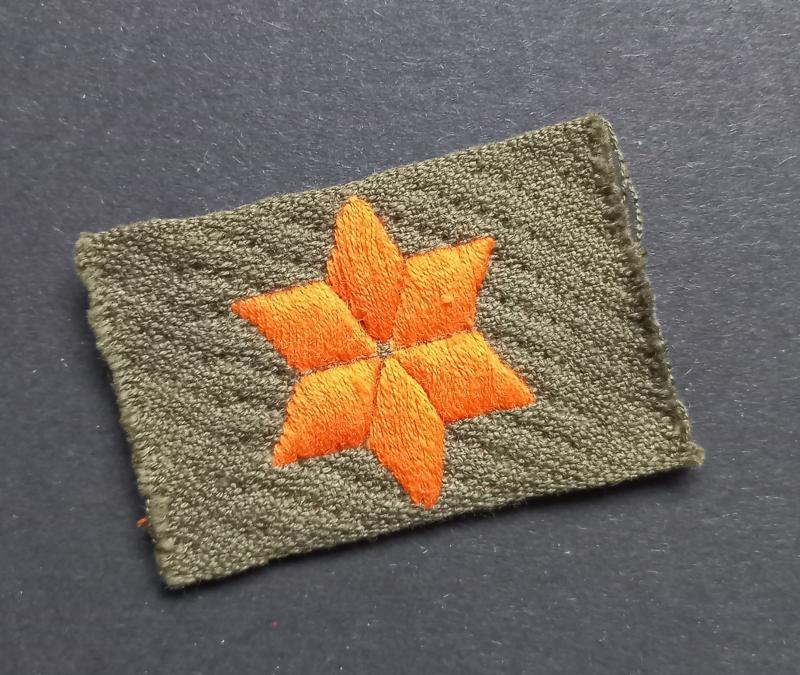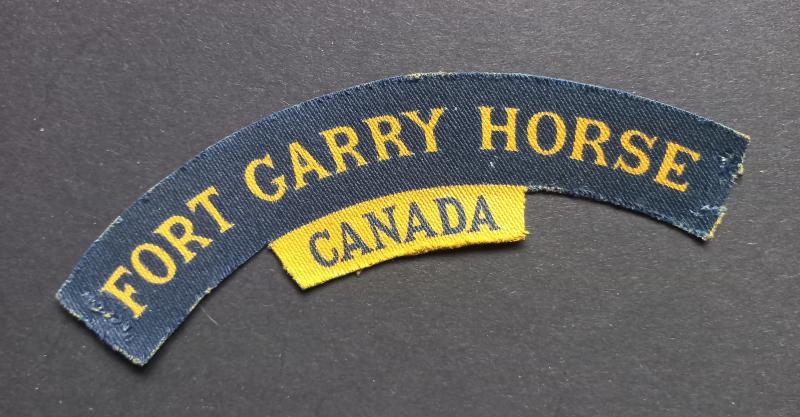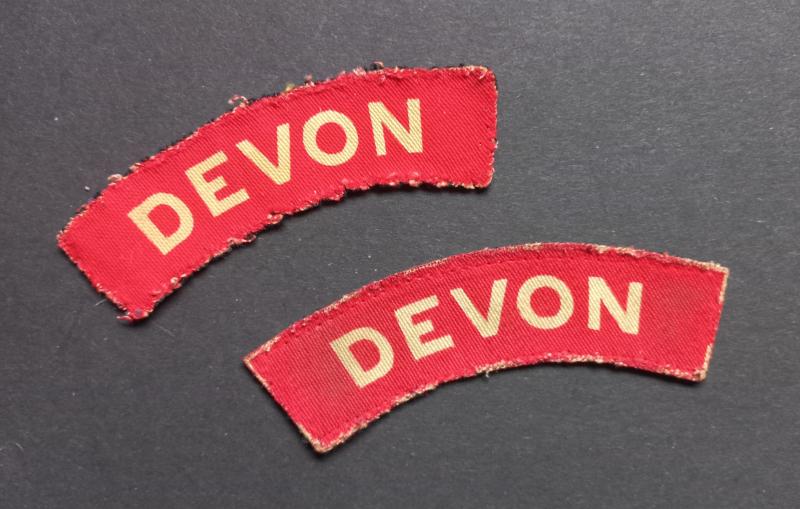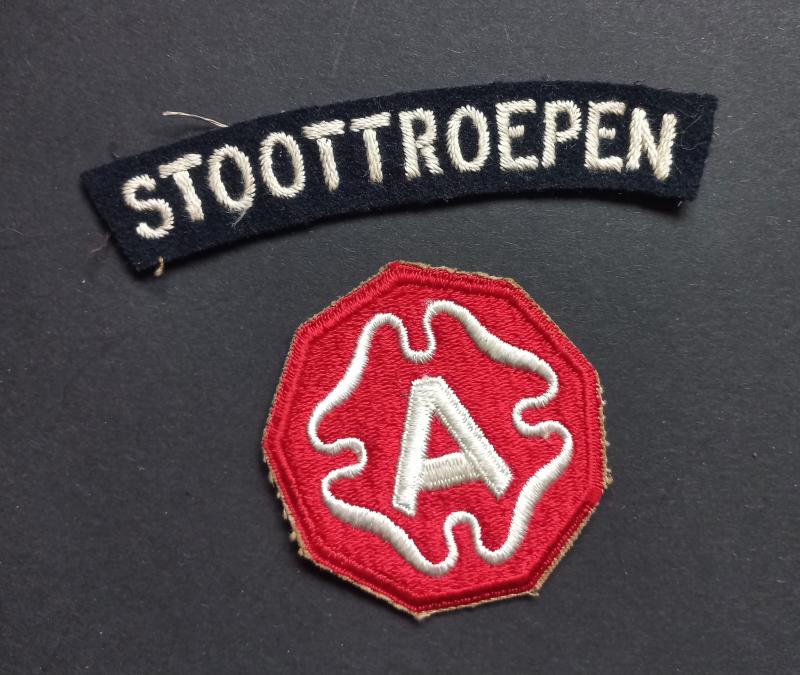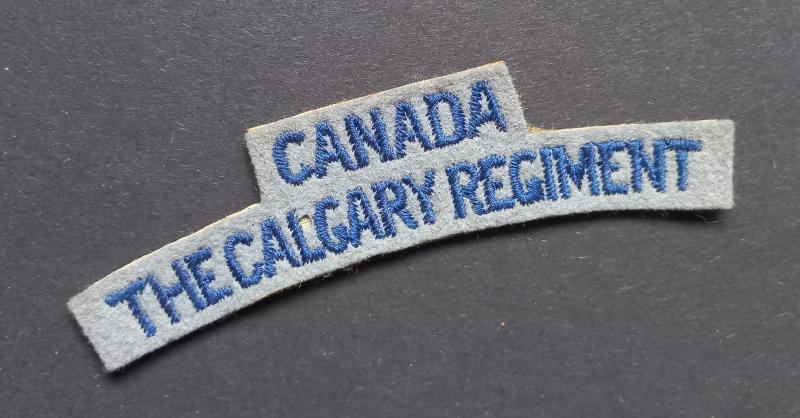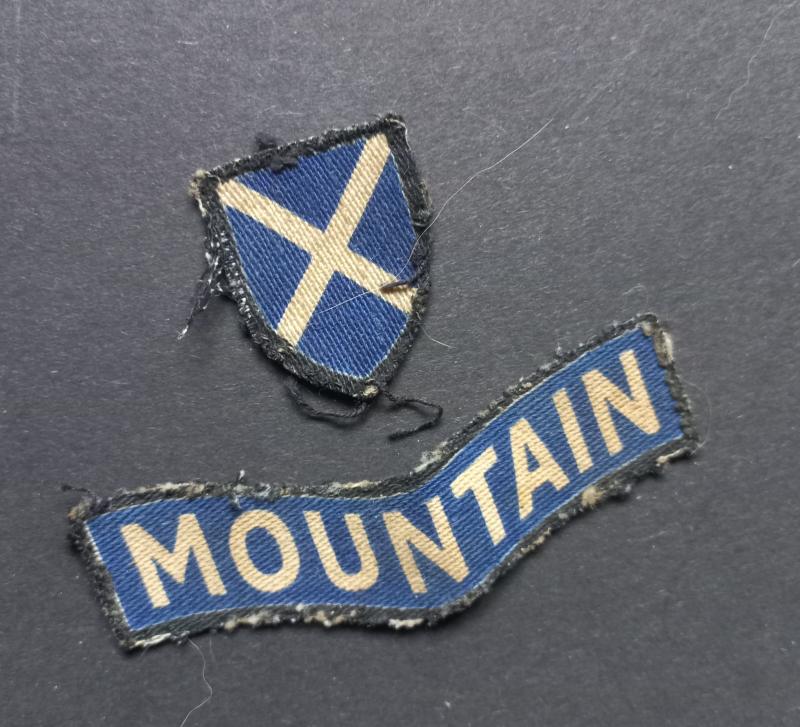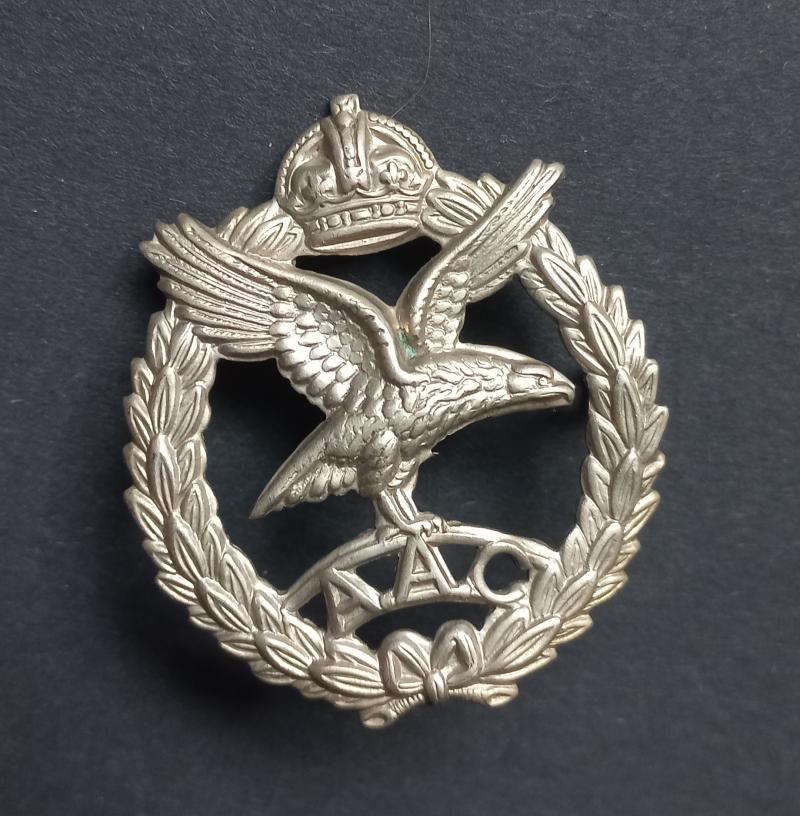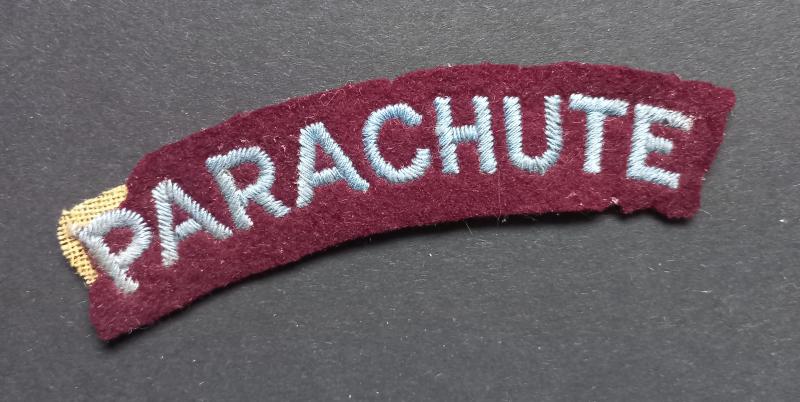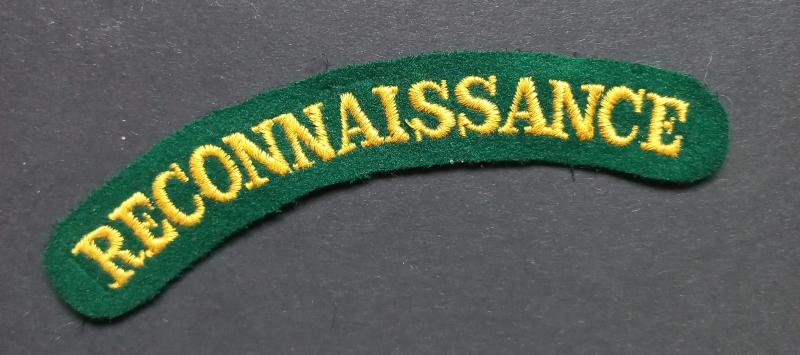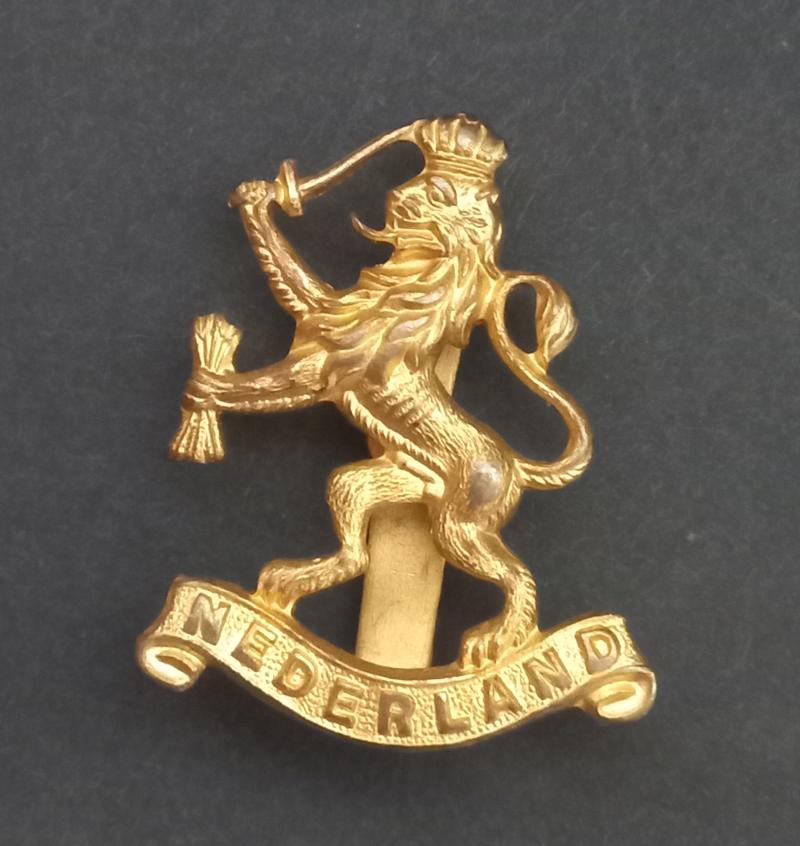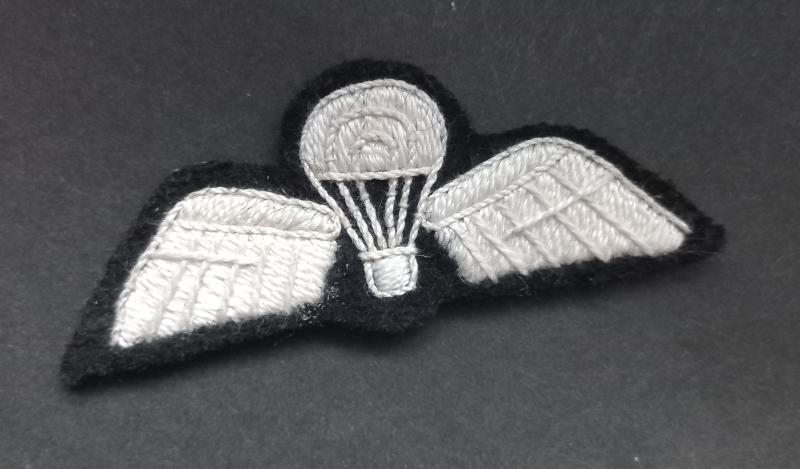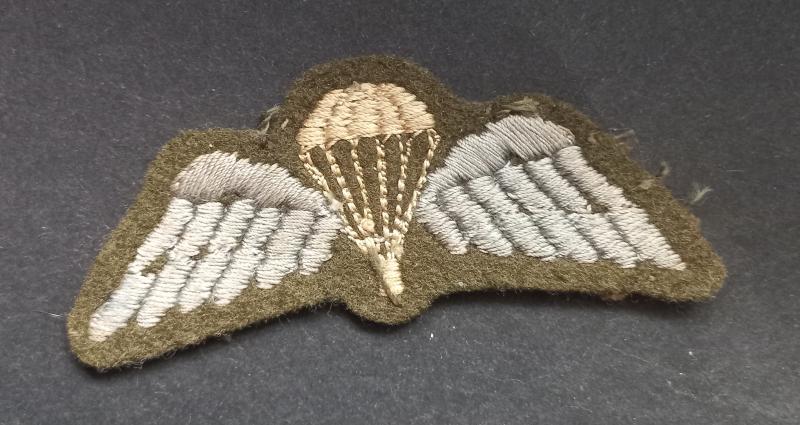A very attractive and sought after (British made Calico Printers) Canadian Le Regiment de la Chaudiere printed shoulder title
This is a perfect example of a very attractive and sought after (British made Calaico Printers) Canadian Le Regiment de la Chaudiere printed shoulder title. The regiment mobilized Le Régiment de la Chaudière (Mitrailleuses), CASF on 1 September 1939, as a machine gun battalion. The unit was redesignated Le Régiment de la Chaudière, CASF on 24 May 1940, and embarked for the United Kingdom on 21 ... read more
A very attractive - British made - embroided Polish10th Dragoons (Lanarkshire Honour) Regiment shoulder patch
This is a perfect example of a Polish badge of Honor awarded to the 10th Dragon Regiment by Lanark County Council and Lord Hamilton of Dalzell. read more
A perfect - not so often seen - Middle East Commando shoulder title
This is a perfect example of a Middle East Commando shoulder title. Middle East Commando was a battalion sized British Commando unit of the British Army during the Second World War. The Commando was formed in the Middle East in October 1941 from L Detachment, Special Air Service, the remnants of Layforce (No.3 Troop) and No. 51 Middle East Commando and the Special Boat Section partly to placate... read more
A superb (typical British made) The Royal Canadian Regiment embroided shoulder title
This is a nice example of a British made The Royal Canadian Regiment shoulder title. When war was declared on September 10, the RCR had already been allocated to the 1st Canadian Infantry Brigade, a formation made up entirely of Ontario units. Moving to the United Kingdom in December 1939 as a component of the 1st Canadian Infantry Division, the RCR saw hard training for almost four years. On 1... read more
45.00 EUR
A attractive - wartime British i.e Dutch made - Dutch Free Forces arm i.e formation lion
This is a neat example of a nice wartime British made Dutch Free Forces arm i.e formation lion. The lion was worn by all members of the Netherlands Army (Allied forces) what was later renamed as the Royal Netherlands Brigade. The Brigade was part of 21st Army Group and took part in the liberation of Western Europe and the Netherlands. The badge worn by all Netherlands troops on the left upper a... read more
A attractive - standard wartime issued - capbadge to the Parachute Regiment
This is a neat example of standard wartime Parachute Regiment beret badge. Heavy quality white metal. in a good and nice condition. read more
65.00 EUR
A perfect - left facing - single embroided Combines Operation formation badge
This is a good example of a - left facing - single embroided Combines Operation formation badge. The phrase "combined operations" was first introduced by the British War Office in World War II to denote multi-service activities, those that involved air, land or naval forces acting together, and coordinated by the Combined Operations Headquarters. This example is in a good and in a un-issued con... read more
A attractive Free Dutch Forces Officers (British made Gaunt London marked) Nederland cap badge
This is a superb example of a - British made - Officers Nederland cap badge in solid messing complete with two blades to the reverse stamped with makers mark J R Gaunt London. read more
A superb - albeit regrettably single - British made Belgium shoulder title
This is a great - albeit regrettably single - read on black embroided British made Belgium shoulder title. The title has the block type lettering with the well known glue i.e paste backing and is in a good condition. These Belgium titles are more difficult to find these days. read more
A very attractive - British made Calico printers - Canadian Seaforth Highlanders printed shoulder title
This is a perfect example of a attractive - British made Calico printers - Canadian Seaforth Highlanders printed shoulder title. The regiment mobilized The Seaforth Highlanders of Canada, CASF for active service on 1 September 1939. It was redesignated as the 1st Battalion, The Seaforth Highlanders of Canada, CASF on 7 November 1940. It embarked for Britain on 20 December 1939. The battalion la... read more
A attractive - issued full matching British made - set of National Free Czechoslovakia shoulder titles
This is a neat example of a nice and issued British made national free Czechoslovakia shoulder titles. Czechoslovak exile units saw action on most of the major fronts of WW2 and generally performed very well. They earned the respect and admiration of other Allied nations and units and their sacrifices were crowned when they could return home to a free Czechoslovakia in 1945, though now as part ... read more
90.00 EUR
A perfect - so called Brabant weef - Dutch Volunteer star (ster)
This is a good example of a - so called Brabant weef - Dutch Volunteer star (ster). The "volunteer star" within the Princess Irene Brigade was a special award or designation for men (and possibly women) who volunteered for this Dutch military unit during WWII, often in England or South Africa, with a star as a symbol on their uniform, distinguishing them from conscripts. This example is in a pe... read more
A attractive (Calico printers made) Fort Garry Horse printed shoulder title
This is a perfect example of a sought after (Calico printers made) Fort Garry Horse printed shoulder title. The regiment mobilized The Fort Garry Horse, CASF, on 1 September 1939. It was redesignated as the 10th Armoured Regiment (The Fort Garry Horse), CASF, on 11 February 1941, the 10th Armoured Regiment (The Fort Garry Horse), CAC, CASF, on 15 October 1943 and the 10th Armoured Regiment (The... read more
A superb - full matching - set of printed Devon shoulder titles
This is a perfect example of a superb - full matching - set of printed Devon shoulder titles. During 1943 the 12th Battalion became a Glider borne unit within the newly formed 6th Airlanding Brigade, 6th Airborne Division and saw heavy action during the rest of the war including Normandy and the river Rhine in 1945.
This set is in a removed from uniform condition. Hard to upgrade. read more
A nice little set of (Dutch and US Army) badges to the Dutch Stoottroepen Regiment and US 9th Army
This is a great little set of badges as worn by members of the Dutch Stoottroepen Regiment who were under US 9th Army command. In September 1944, shortly after the liberation of the south of the Netherlands, various resistance groups formed the Stoottroepen as part of the Dutch Interior Forces. The volunteers came primarily from the provinces of North Brabant, Limburg, and Zeeland. The Stoottro... read more
95.00 EUR
A attractive - British made - Canadian The Calgary Regiment shoulder title
This is a superb example of a - British made - Canadian The Calgary Regiment shoulder title. When the Canadian Armoured Corps was created, the Calgary Regiment lost its status as an infantry regiment and transferred to the new corps. A reserve regiment remained in Calgary. The regiment was composed of 400 members of the reserve battalion, drawing also from reinforcement personnel from the Seafo... read more
A nice - fully matching - set of printed shoulder badges to the 52nd (Lowland) Infantry Division
This is a truly attractive - fully matching - set of printed shoulder badges to the 52nd (Lowland) Infantry Division. 52nd (Lowland) Division was a first-line Territorial Formation in 1939. It did not join the main BEF in France and Belgium but following the Dunkirk evacuation was earmarked to form part of a proposed re-constituted BEF. It landed through Brest, Cherbourg and St Malo on 10 June ... read more
A superb - highly detailed - white metal Army Air Corps cap badge
This is a good example of a white metal Army Air Corps beret badge and mainly worn by members of the Glider Pilot Regiment. The AAC badge was also worn by the early members of the Parachute Regiment in North Africa. This example is in a good condition and has two silver coloured lugs to the back. These badges are harder to find these days. read more
A superb - typical British made - Canadian Newfoundland Regiment shoulder title
This is a great example of a - typical British made - Canadian Newfoundland Regiment shoulder title. The efforts of the Canadian Army to expand and train the Newfoundland militia to professional standards resulted in the Newfoundland Militia being re-designated the Newfoundland Regiment on 2 March 1943. The regiment stayed in a home-defence role, but in addition to these duties was also tasked ... read more
A superb - regrettably single - mid war period so called 'block type' lettering Parachute shoulder title
This is a great example of a - albeit regrettably single - mid war period 'block type' lettering Parachute shoulder title. Introduced in 1944 and was worn by some members of the 6th Airborne Division prior the D-Day landings (see photo). Tis example has a small piece missing at the left upper corner and there for the title is priced accordingly.
Photos by Imerial War Museum. read more
125.00 EUR
A attractive and nicely embroided Reconnaissaince shoulder title with a so called 'serif type' lettering
This is a superb example of a not so often found Reconnaissance shoulder title. The Reconnaissance Corps, or simply Recce Corps, was a Corps of the British Army, formed during the Second World War whose units provided the mobile spearhead of infantry divisions. It was formed from infantry brigade reconnaissance groups on 14 January 1941. All the brigade reconnaissance groups of each infantry co... read more
95.00 EUR
A attractive Free Dutch Forces Officers (British made unfortnatly not marked) Nederland cap badge
This is a superb example of a - British made gilded metal - Officers Nederland cap badge complete with two blades to the reverse. read more
A great Indian i.e British made parachute qualification wing
This is a neat example of a Iocal Indian i.e British made parachute qualification wing. The first Indian Airborne formation was the 50 Independent Parachute Brigade raised on 29 October 1941 with 151 British, 152 Indian, and 153 Gurkha Parachute Battalions and other support units. Later, in March 1944, less the British battalion (which was transferred to Britain and renamed the 156th Para Bn a... read more
A very attractive - early variation with split feather - typical British made parachute qualification wing
This is superb example of a - early variation - typical British made parachute qualification wing. The parachute qualification wing was introduced in early 1941 for everyone who had passed the Parachute Training school located at Ringway near Manchester Airport. These wings came in different shapes and sizes. The parachute qualification wing was issued after the soldier had qualified for them a... read more


